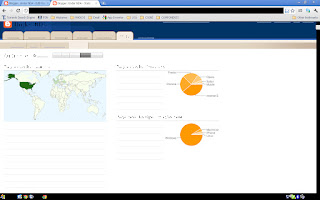I started typing a "back from Autodesk University" post... that never got to publish.
On the last day of the year I am resolving to publish (even) shorter notes, to keep you all in the loop of what I am researching.
My reason for silence during 2011 was that I've been working on some top secret projects and some ongoing projects that can now be mentioned. This year I prepared 4 AU classes, which took also a lot of time. An I did my first lecture as co-speaker and with an invaluable help from Zach Kron (if you don't know his blog, it's a must: http://buildz.blogspot.com/). As I said in the opening statement of the class, I really wanted to attend HIS class, so I figured out that my best bet was to be standing at the front! The class is available online, if you want to find out more about it.
Another highlight of AU was a design challenge, to build "something" with a modular kit of 150 cardboard cutouts, the 123D Fab Challenge. I'll try to get back to this too, it was great fun! My attempt was to build a programmable clockwork puppet, to tell "The sad story of Mr James McFluffy"...
Back on the blogging front, despite not posting since May, according to the Stats for the blog I have received at least a visit a day, of which I am surprised and honoured! I will probably come back to the stats for the blog, I find it surprisingly detailed (in other words, I KNOW WHO YOU ARE - more or less!)
When it comes to projects, the main one was Gatwick. And still is. Here's a video explaining what we've been doing:
It was a presentation for an internal HOK award, and despite a soft tongue-in-cheek format the content sums up a lot of the BIM, Delivery and Collaboration development Ive been working on during the year.
So, as I posted in a tweet (as @UnderNDA) my New Year's Resolution for 2012 is to blog more, and describe what I'm investigating in the field of Architectural Design, with the toys (I meant tools) I've been buying and downloading this year, that include: Arduino, Kinect, Processing, Python, Vasari, Dynamo...
I'm looking forward to a year that will probably see BIM mature to Whole Life Cycle (I'm starting to see extremely interesting integration of data in this sense). Maybe we are about to redefine what an Intelligent Building is... more like the headquarters in the I Robot movie.
So, that's my promise to 2012, a few lines of what I'm up to and sharing the excitement about developing these little projects. See you all next year. If any reader wants me to focus on any specific area, feel free to leave a comment, I promise to pay attention to them!!!
CHAU 2011 y FELIZ 2012, SALUD!!
On the last day of the year I am resolving to publish (even) shorter notes, to keep you all in the loop of what I am researching.
My reason for silence during 2011 was that I've been working on some top secret projects and some ongoing projects that can now be mentioned. This year I prepared 4 AU classes, which took also a lot of time. An I did my first lecture as co-speaker and with an invaluable help from Zach Kron (if you don't know his blog, it's a must: http://buildz.blogspot.com/). As I said in the opening statement of the class, I really wanted to attend HIS class, so I figured out that my best bet was to be standing at the front! The class is available online, if you want to find out more about it.
Another highlight of AU was a design challenge, to build "something" with a modular kit of 150 cardboard cutouts, the 123D Fab Challenge. I'll try to get back to this too, it was great fun! My attempt was to build a programmable clockwork puppet, to tell "The sad story of Mr James McFluffy"...
Back on the blogging front, despite not posting since May, according to the Stats for the blog I have received at least a visit a day, of which I am surprised and honoured! I will probably come back to the stats for the blog, I find it surprisingly detailed (in other words, I KNOW WHO YOU ARE - more or less!)
When it comes to projects, the main one was Gatwick. And still is. Here's a video explaining what we've been doing:
It was a presentation for an internal HOK award, and despite a soft tongue-in-cheek format the content sums up a lot of the BIM, Delivery and Collaboration development Ive been working on during the year.
So, as I posted in a tweet (as @UnderNDA) my New Year's Resolution for 2012 is to blog more, and describe what I'm investigating in the field of Architectural Design, with the toys (I meant tools) I've been buying and downloading this year, that include: Arduino, Kinect, Processing, Python, Vasari, Dynamo...
I'm looking forward to a year that will probably see BIM mature to Whole Life Cycle (I'm starting to see extremely interesting integration of data in this sense). Maybe we are about to redefine what an Intelligent Building is... more like the headquarters in the I Robot movie.
So, that's my promise to 2012, a few lines of what I'm up to and sharing the excitement about developing these little projects. See you all next year. If any reader wants me to focus on any specific area, feel free to leave a comment, I promise to pay attention to them!!!
CHAU 2011 y FELIZ 2012, SALUD!!

Comments
Post a Comment